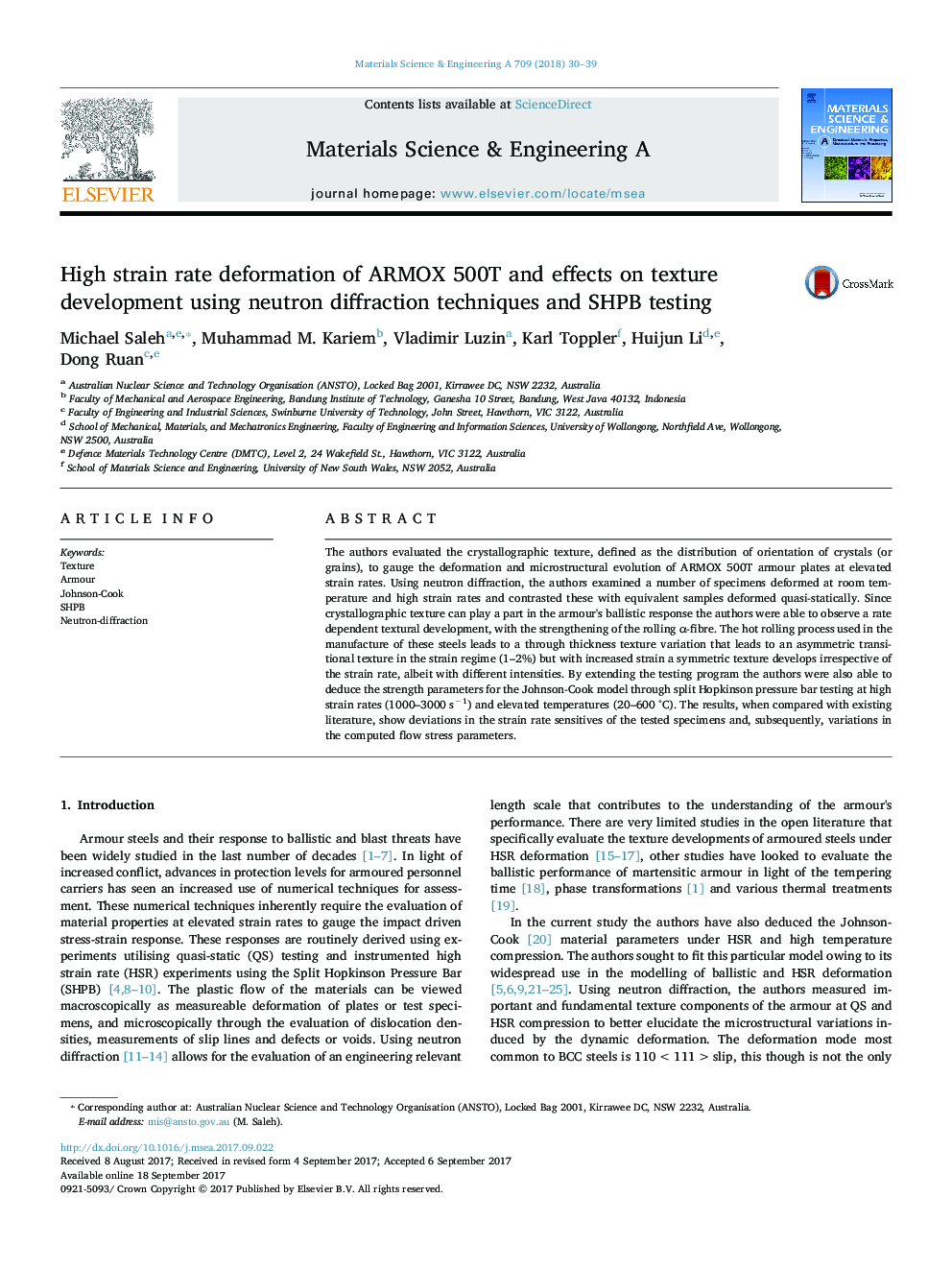| Article ID | Journal | Published Year | Pages | File Type |
|---|---|---|---|---|
| 7974555 | Materials Science and Engineering: A | 2018 | 10 Pages |
Abstract
The authors evaluated the crystallographic texture, defined as the distribution of orientation of crystals (or grains), to gauge the deformation and microstructural evolution of ARMOX 500T armour plates at elevated strain rates. Using neutron diffraction, the authors examined a number of specimens deformed at room temperature and high strain rates and contrasted these with equivalent samples deformed quasi-statically. Since crystallographic texture can play a part in the armour's ballistic response the authors were able to observe a rate dependent textural development, with the strengthening of the rolling α-fibre. The hot rolling process used in the manufacture of these steels leads to a through thickness texture variation that leads to an asymmetric transitional texture in the strain regime (1-2%) but with increased strain a symmetric texture develops irrespective of the strain rate, albeit with different intensities. By extending the testing program the authors were also able to deduce the strength parameters for the Johnson-Cook model through split Hopkinson pressure bar testing at high strain rates (1000-3000 sâ1) and elevated temperatures (20-600 °C). The results, when compared with existing literature, show deviations in the strain rate sensitives of the tested specimens and, subsequently, variations in the computed flow stress parameters.
Related Topics
Physical Sciences and Engineering
Materials Science
Materials Science (General)
Authors
Michael Saleh, Muhammad M. Kariem, Vladimir Luzin, Karl Toppler, Huijun Li, Dong Ruan,
